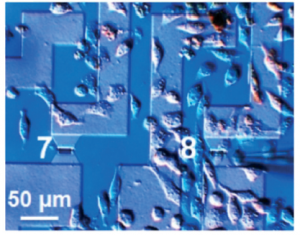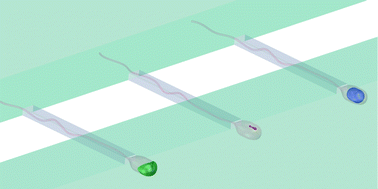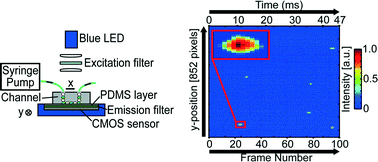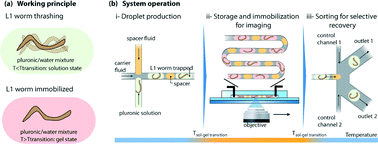By developing an ion-sensitive field-effect transistor with small gate dimensions, scientists at the University of Applied Sciences Kaiserslautern in Germany were able to measure cell-substrate adhesion on the single cell scale.
To survive, most mammalian cells attach to other cells and the extracellular environment in order to regulate their growth, proliferation, and migration. Electrical impedance spectroscopy is one way to quantitatively monitor cell-substrate interactions. The strength of cellular adhesion to a substrate with integrated electrodes can be measured by comparing the ratio of the readout voltage to the applied alternating current. Yet this method is limited groups of many cells as the size of the microelectrode must be larger than 100 μm in diameter. Smaller features are subject to greater interface impedance between the electrode and liquid media and this background impedance overwhelms the desired cell-substrate measurements. Suslorapova and colleagues thus used an ion-sensitive field-effect transistor (ISFET) with small gate dimensions to overcome this limitation. The group was able measure the effects of enzymatic digestion with trypsin and an apoptosis-inducing drug on single cell detachment using the ISFET devices with a 16 by 2 square micron gate.
The authors create an equivalent circuit model to interpret recorded impedance spectra from their single cell and small cell groups grown in contact with the field-effect transistor devices. The seal resistance and membrane capacitance parameters which can be extracted from the measured transistor transfer function (TTF) provide measures of cell shape and adhesion to the substrate. Changes in TTF correspond to adhesion of individual cells on top of the ISFET gates. This platform and the model developed to interpret TTF signal opens exciting avenues to monitoring cell adhesion in high throughput yet still at single cell resolution.
Download the full research paper paper for free* for a limited time only!
Electrical cell-substrate impedance sensing with field-effect transistors is able to unravel cellular adhesion and detachment processes on a single cell level
A. Susloparova , D. Koppenhöfer , J. K. Y. Law , X. T. Vu and S. Ingebrandt. Lab Chip, 2015, 15, 668-679. DOI: 10.1039/C4LC00593G


















